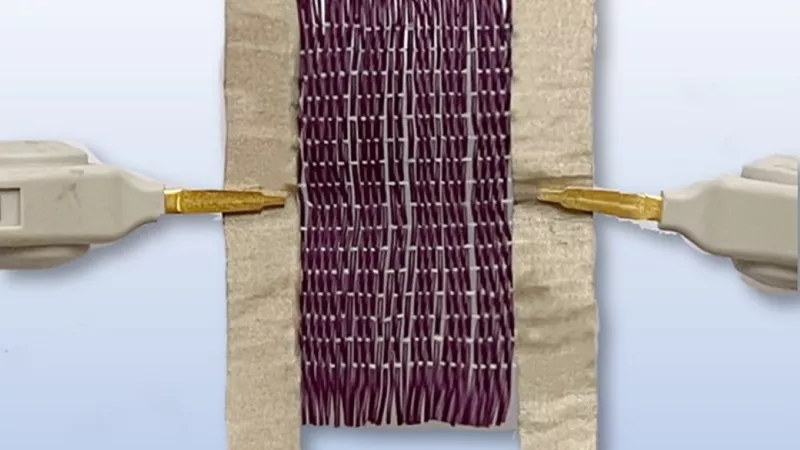A team from the University of Waterloo, Canada, developed a smart material that can be activated by both, electricity, and heat. The smart fabric is a stimuli-responsive material (SRM), is inexpensive to make, utilizes plastic and steel fibers, and may potentially have various application possibilities, such as clothing that is able to warm, or vehicle bumpers that can return to their original shape after a collision.
Moreover, the color and shape of the material can be changed, when stimuli such as heat, and electricity are applied, while the polymer nano-composite fibers are made from recycled plastic. In addition, the polymer composites and stainless steel are combined in a woven structure.
As said by the chemical engineering professor at the University of Waterloo, Dr. Milad Kamkar, “As a wearable material alone, it has almost infinite potential in AI, robotics and virtual reality games and experiences,”, adding “Imagine feeling warmth or a physical trigger eliciting a more in-depth adventure in the virtual world.”
This novel fabric can be activated by low voltage levels (5 volts), which brings additional benefits compared to the previous model, such as enhanced energy efficiency and cost-effectiveness, allowing the fabric to be integrated into even more portable devices, such as biomedical devices and environment sensors.
It was also added by Dr. Kamkar that “The idea of these intelligent materials was first bred and born from biomimicry science,”, adding that “Through the ability to sense and react to environmental stimuli such as temperature, this is proof-of-concept that our new material can interact with the environment to monitor ecosystems without damaging them.”
A further step of the team would be to enhance the shape-memory option for robotics applications.
The research paper has been published in Nano-Micro Small in February 2023, named “Multi-Stimuli Dually-Responsive Intelligent Woven Structures with Local Programmability for Biomimetic Applications”.
Article and Image Source: University of Waterloo






